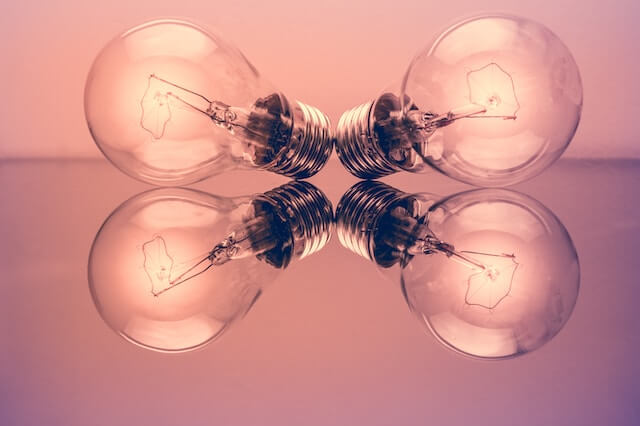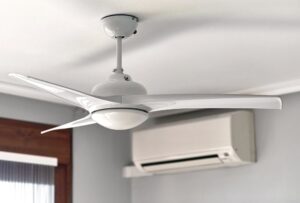Common Types of Lights
There are four common types of lights that you’ve most likely heard of, these are:
Incandescent Lights
Incandescent lights are the traditional light bulbs we are all familiar with. They work by passing electricity through a filament, which produces light. However, they are highly inefficient, as they waste a significant amount of energy by generating heat.
Incandescent lights also have a relatively short lifespan and are being phased out due to advancements in lighting technology.
Halogen Lights
Halogen lights are a type of incandescent light that uses a halogen gas (such as iodine or bromine) in a small enclosed capsule. This gas helps to recycle the evaporated tungsten back onto the filament, allowing the bulb to produce light more efficiently and last longer than traditional incandescent lights. Halogen lights provide a bright and focused light output but can operate at higher temperatures.
Compact Fluorescent Lights (CFLs)
CFLs are energy-efficient alternatives to incandescent lights. They work by passing an electric current through a tube containing argon and a small amount of mercury vapor. This process generates ultraviolet light that excites a fluorescent coating inside the tube, producing visible light.
CFLs use significantly less energy than incandescent lights and have a longer lifespan, making them a popular choice for energy-conscious consumers. However, it’s important to note that CFLs contain small amounts of mercury, so proper disposal is necessary to prevent environmental contamination.
Light Emitting Diodes (LEDs)
LEDs are highly energy-efficient lights that have gained popularity in recent years. They work by passing an electric current through a semiconductor material, causing it to emit light.
LEDs consume significantly less energy than incandescent lights and have an impressively long lifespan. They are durable, versatile, and available in various colors and designs, making them suitable for a wide range of applications.
Impact on Electricity Bill
Wattage and Energy Consumption
The wattage of a light bulb directly affects its energy consumption. Higher wattage bulbs consume more electricity, resulting in higher energy costs.
Comparing different types of lights, incandescent bulbs typically have the highest wattage, followed by halogen lights, CFLs, and LEDs.
By switching to energy-efficient lights with lower wattages, you can significantly reduce your electricity consumption and lower your bills.
Calculating Electricity Usage and Cost
To calculate electricity usage and cost, you need to consider both the wattage of the light bulb and the number of hours it is used.
Multiply the wattage by the number of hours of usage to get the total kilowatt-hours (kWh) consumed. Multiply this by the cost per kWh charged by your utility provider to determine the cost of running the light bulb.
By comparing the energy consumption and cost of different types of lights, you can make informed decisions to reduce your electricity expenses.
Factors Influencing Electricity Consumption
Several factors can influence the electricity consumption of lights. The brightness level of the bulb, measured in lumens, determines the amount of light it produces. Choosing a bulb with the appropriate brightness for each specific area can help optimise energy usage.
Colour temperature also plays a role, with warmer colours providing a cosy ambiance and cooler colours resembling daylight. Additionally, dimmable lights and smart lighting systems offer flexibility and the ability to adjust the light output according to your needs, potentially saving energy.











